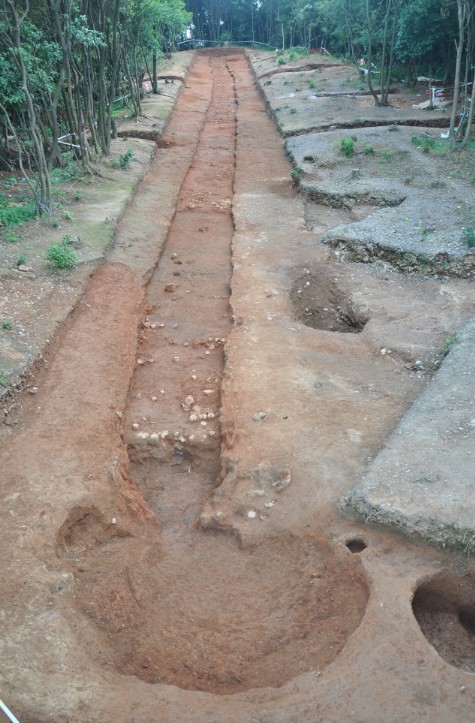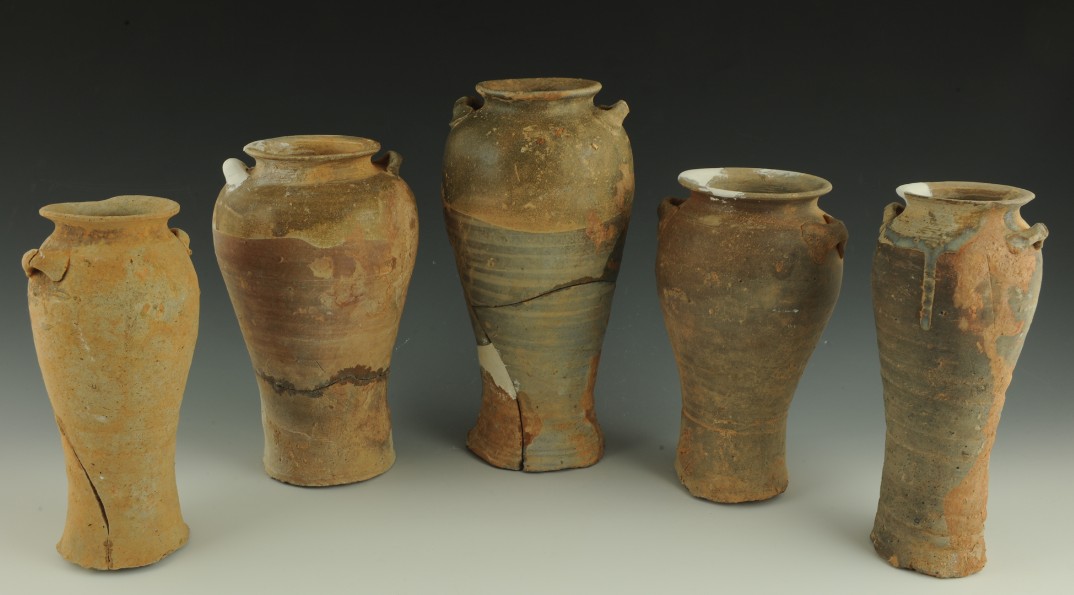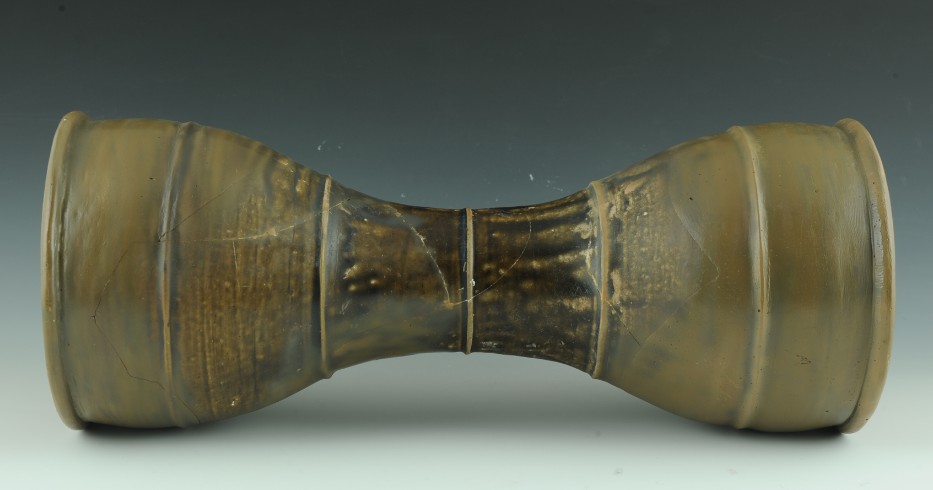Nanyao porcelain Kilns of Tang Dynasty Found in Jingdezhen, SE China
From:Chinese Archaeology NetWriter:Date:2014-04-30
Nanyao porcelain Kilns site is located in Jingdezhen, Pingle City, Jiangxi Provence. During March to November, 2013, archaeological excavation was carried out where 2 dragon kilns, 10 ash pits, 1 ash trench and 1 road remains had been uncovered. The total unearthed area reached 1013.5 square meters. Tens thousands tons of porcelain shards and kiln furniture were discovered.
The excavation shows that cultural deposit layers are of 1-3 meter thick and the thickest place can be more than 5 meters. The magnificent size is over 30,000 square meters. With the large size and well-preserved state, it is rarely found in the same kind of kilns in Jiangxi Province.
There are rich remains found in this kiln, including taken white clay pit, channels for transporting raw materials, ports, storage pools, ovens for firing and other working place remains used in making porcelains. These well-conserved remains are connected together. Not only the whole scale but also the porcelain production processes all recreate and recover the real situation of porcelain making of Nanyao porcelain kiln in Tang Dynasty.
Plenty of kiln furniture and porcelain shards scattered in the northern part of the kiln in Nanyao village. It is up to 200 meter from east to west and 153 meter from south to north. Besides, there are 13 ridged deposits obviously being observed on the ground. According to the exploration, one dragon kiln remains is found in the middle of each two ridged deposits, and totally 12 dragon kilns are discovered which are distributed in the shape of fan spread from the high point in the center down to the east, north and west. Remarkably, a 78.8-meter-long dragon kiln is completely uncovered which consists of working surfaces in front of the kiln, fire door, fire chamber, kiln beds, walls and the end of kiln and so on. The width is about 1.6-2.4 meters and the remained length is about 0-0.6 meter. This is the longest dragon kiln remains of Tang dynasty found so far in archaeological discovery.

overall view of the dragon kiln
Based on the stratum relationship and unearthed artifacts, the dragon kiln is predicted to belong to the middle and late Tang Dynasty when celadon were firing on props in dragon kiln which was constructed firstly by materials like bamboos and vines, and then added a clay coating due to the unearthed remains and relationships between stratigraphic layers. Several props arranged orderly in their original state found in the kiln chamber provided important evidence for the capacity of dragon kilns as well as researches in terms of the production processes, techniques of kilns constructions, firing processes of Nanyao porcelain kilns and social and economic history at that time.
This dragon kiln had been made up for at least 5 times. And 5 fired layers were found in the bottom of kiln, while at least 5 coatings were discovered on some of the walls. Especially, square holes for reducing fires applied in the middle part of the kiln bed at the early period of the production is totally unknown in the past dragon kiln remains.

props arranged orderly in their original state found in the kiln chamber
From the archaeological research, Nanyao porcelain kiln was an important celadon kiln dating back to Tang Dynasty with a distinct and particular style. Most of its products were made on open flame, while few high-grade ones are fired in saggers. With high porcelain making techniques, and first-class firing level, porcelains from it are of exquisite quality, elegant shapes, high artistic value, characteristic firing techniques and decorated arts. Moreover, some of the techniques went ahead in the kilns at that time.

blue glazed porcelain bottles
Various kinds of glazed porcelain have been found, containing blue glazed ones, dark brown glazed ones, blue glazed ones with brown dots painted on it, blue glazed ones with brown painting as well as bare ones. Among them, blue glazed porcelain are the dominance. Both large and small shapes are dignified, ranging from two ears bottles, small bottles, ewers, pots with a plate-shaped opening, jars, bowls, waist drums and lids and so on. Among them, bowls, plates and two ears bottles are the main kinds. Besides, there are rare pieces like xun-instruments with a human face, tea grinds, porcelain weights, yandi-small pieces used to hold waters for grounding the inkstick and so on. Especially, waist drums with blue or dark-brown glaze and large sized bowls might be made for Hu people which demonstrate the history of frequent cultural communications between Gan-Po region and the western regions. What’s more, vessel shapes like jars whose covers can be tied on the ears with lines and pots with two ears that belts can get through are of high chronological meanings. Specifically, with the development of the pottery and porcelain road through the sea, as one of its hallmark, jars whose covers can be tied on the ears began to produce as new products around 800 AD.

waist drum with blue or dark-brown glaze
It’s proved by archaeological evidence that Nanyao porcelain kiln began in the middle of Tang Dynasty, flourished in the middle and late period of Tang Dynasty and declined in the late period of Tang Dynasty, dating back to 1,200 years ago. As the earliest porcelain remains in Jingdezhen so far, the discovery of Nanyao porcelain kiln not only fills the blank of porcelain kiln in Tang Dynasty and pushes forward the history of porcelain firing in Jingdezhen which correcting and making up the history, but also enrich the connotation of porcelain culture in Jingdezhen providing vital significant clues for the research of the origin of porcelain industry and development of porcelain handicraft and blue glazed porcelain in Tang Dynasty. (Translator: Ma Huanhuan)

